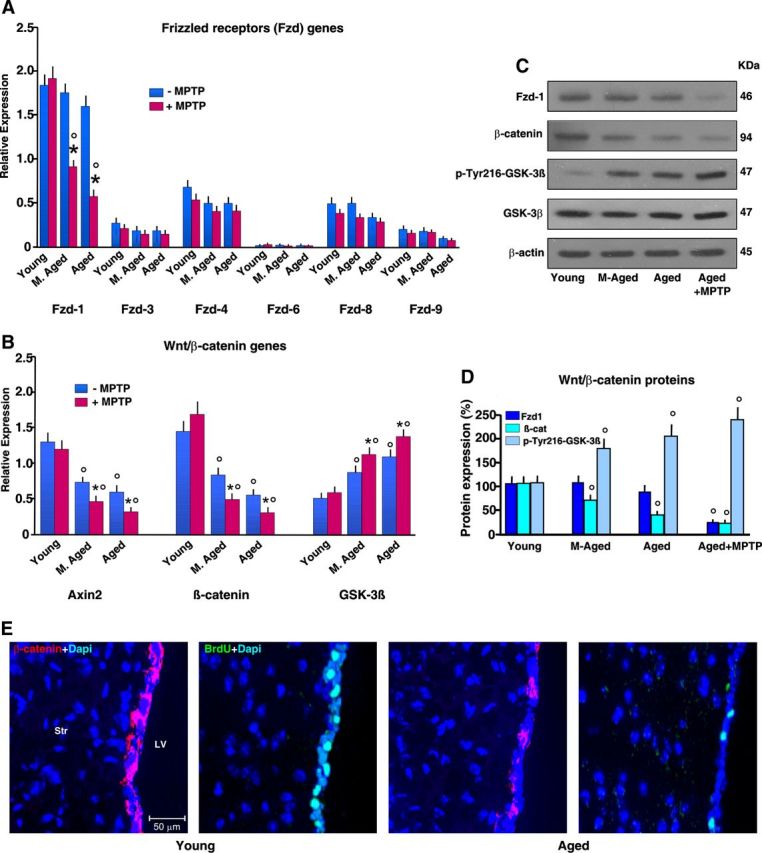Figure 8.

Effect of age on key components of Wnt/β-catenin signaling in saline-treated and MPTP-treated mice. After mice treated with saline or MPTP were killed 65 dpt (8 mice/tp), the SVZ was isolated and processed for real-time PCR. A, B, Comparison of Frizzled (A, Fzd-1–Fzd-9) and Wnt/β-catenin (B, β-catenin, Axin2, and GSK-3β) gene expression in SVZ from mice of the different age groups. Changes in mRNA levels expressed as relative expression (arbitrary units). Aging and neurotoxin exposure differentially modulate Fzds expression (A). Only Fzd-1 is downregulated in aging mice upon exposure to MPTP (A). β-Catenin and Axin2 transcript levels are decreased with age, in the face of upregulated GSK-3β (B). *p < 0.05 versus −MPTP; °p < 0.05 versus young within each experimental group. C, D, Western blots of Fzd-1, β-catenin, and pGSK-3β. The bands were densitometrically quantified on x-ray film using ImageQuantity One. Densitometric values of Fzd-1 and β-catenin were normalized to β-actin, p-GSK-3β, total GSK-β, and values expressed as percentage changes compared with control (young NPC). The means ± SEM of three individual determinations is shown. °p < 0.05 versus young. E, Comparison of representative images showing β-catenin+ (red) or BrdU (green) cells counterstained with DAPI (blue) within the SVZ of young and aged mice showing loss of β-catenin+ and BrdU+ cells with age.
